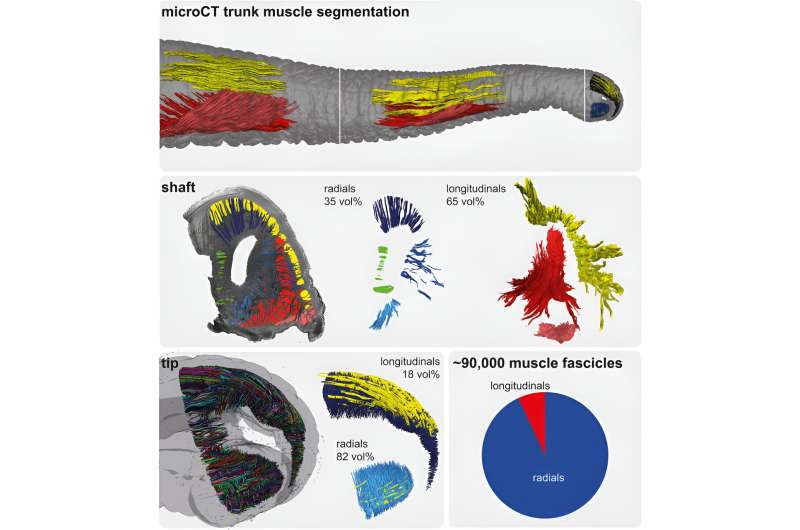Credit: Current Biology (2023). DOI: 10.1016/j.cub.2023.09.007
A recent study investigated the musculature of the elephant and found that the trunk is a complex mesh of interwoven muscle and has an immense number of parts. The study was published on September 26, 2023, in Current Biology.
With the most complex musculature known in animals, the trunk of the elephant moves elegantly without any bones. Instead, their trunk moves with muscles pushing against each other to provide rigidity and form joints. Even today, the number of muscles in the elephant trunk is unclear.
To provide an answer, Luke Longren, Lennart Eigen and Michael Brecht from Humboldt-Universität in Berlin and Hildebrandt from the Leibniz-Institute for Zoo and Wildlife Research (IWZ) investigated the muscles of the elephant trunk at a microscopic scale.
Creating a 3D image of the trunk using a microCT scanner, the researchers traced the individual muscle parts, called fascicles, to reconstruct the thousands of microscopic muscles. In total, there are an estimated 90,000 muscle fascicles in the elephant trunk.
Brecht notes, "We knew elephant trunks have many muscles, but the microscopic size of trunk tip muscles was a big surprise." With so many tiny muscles, the elephant is able to perform the impressive, dexterous movement of its trunk.
More information: Luke L. Longren et al, Dense reconstruction of elephant trunk musculature, Current Biology (2023). DOI: 10.1016/j.cub.2023.09.007
Journal information: Current Biology
Provided by Humboldt-Universität zu Berlin
























